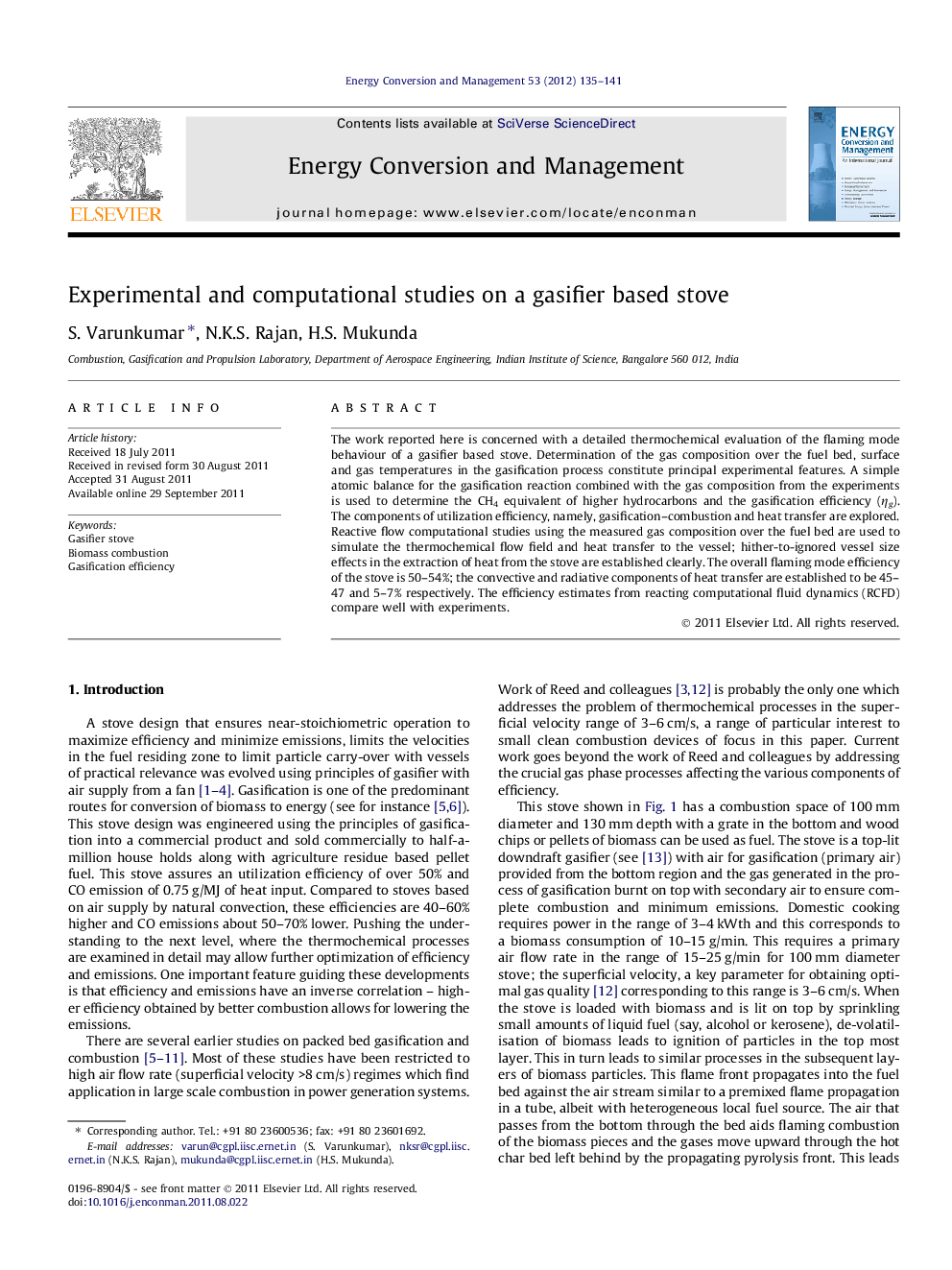| Article ID | Journal | Published Year | Pages | File Type |
|---|---|---|---|---|
| 764357 | Energy Conversion and Management | 2012 | 7 Pages |
The work reported here is concerned with a detailed thermochemical evaluation of the flaming mode behaviour of a gasifier based stove. Determination of the gas composition over the fuel bed, surface and gas temperatures in the gasification process constitute principal experimental features. A simple atomic balance for the gasification reaction combined with the gas composition from the experiments is used to determine the CH4 equivalent of higher hydrocarbons and the gasification efficiency (ηg). The components of utilization efficiency, namely, gasification–combustion and heat transfer are explored. Reactive flow computational studies using the measured gas composition over the fuel bed are used to simulate the thermochemical flow field and heat transfer to the vessel; hither-to-ignored vessel size effects in the extraction of heat from the stove are established clearly. The overall flaming mode efficiency of the stove is 50–54%; the convective and radiative components of heat transfer are established to be 45–47 and 5–7% respectively. The efficiency estimates from reacting computational fluid dynamics (RCFD) compare well with experiments.
► A simple method to calculate the fraction of HHC was devised. ► ηg for stove is same as that of a downdraft gasifier. ► Gas from stove contains 5.5% of CH4 equivalent of HHC. ► Effect of vessel size on utilization efficiency brought out clearly. ► Contribution of radiative heat transfer from char bed to efficiency is 6%.
